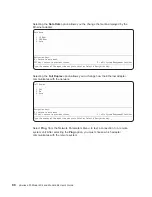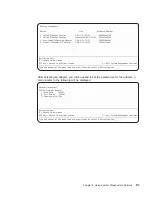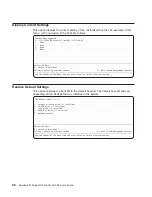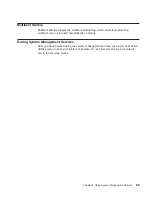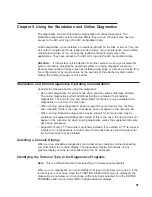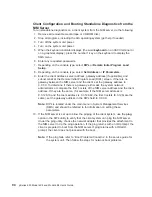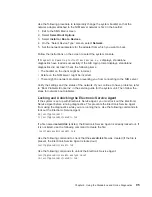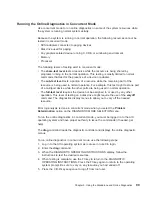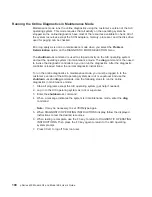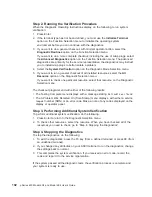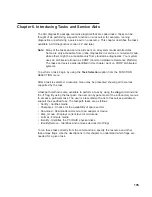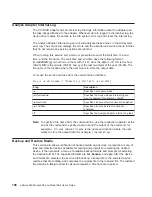
Client Configuration and Booting Standalone Diagnostics from the
NIM Server
To run standalone diagnostics on a client system from the NIM server, do the following:
1. Remove all removable media (tape or CD-ROM disc).
2. Stop all programs, including the AIX operating system (get help if needed).
3. Turn off the system unit power.
4. Turn on the system unit power.
5. When the keyboard indicator displays (the word keyboard on an ASCII terminal or
on a graphical display), press the number 1 key on the keyboard to display the
SMS menu.
6. Enter any requested passwords.
7. Depending on the console type, select RIPL or Remote Initial Program Load
Setup.
8. Depending on the console type, select Set Address or IP Parameters.
9. Enter the client address, server address, gateway address (if applicable), and
subnet mask at the Remote Initial Program Load (RIPL) screen. If there is no
gateway between the NIM server and the client, set the gateway address to
0.0.0.0. To determine if there is a gateway, either ask the system network
administrator or compare the first 3 octets of the NIM server address and the client
address. If they are the same, (for example, if the NIM server address is
9.3.126.16 and the client address is 9.3.126.42, the first 3 octets (9.3.126) are the
same), set the gateway address in the RIPL field to 0.0.0.0.
Note: RIPL is located under the main menu in System Management Services
(SMS) and should be referred to for information on setting these
parameters.
10. If the NIM server is set up to allow the pinging of the client system, use the ping
option in the RIPL utility to verify that the client system can ping the NIM server.
Under the ping utility, choose the network adapter that provides the attachment to
the NIM server to do the ping operation. If the ping returns with an
OK prompt, the
client is prepared to boot from the NIM server. If ping returns with a
FAILED
prompt, the client does not proceed with the boot.
Note: If the ping fails, refer to
″
Boot Problems/Concerns
″
in the service guide for
the system unit. Then follow the steps for network boot problems.
94
pSeries 630 Model 6C4 and Model 6E4 User’s Guide
Содержание 6.00E+04
Страница 1: ...pSeries 630 Model 6C4 and Model 6E4 User s Guide SA38 0606 00 ERserver IBM...
Страница 2: ......
Страница 3: ...pSeries 630 Model 6C4 and Model 6E4 User s Guide SA38 0606 00 ERserver IBM...
Страница 14: ...xii pSeries 630 Model 6C4 and Model 6E4 User s Guide...
Страница 16: ...xiv pSeries 630 Model 6C4 and Model 6E4 User s Guide...
Страница 44: ...26 pSeries 630 Model 6C4 and Model 6E4 User s Guide...
Страница 92: ...74 pSeries 630 Model 6C4 and Model 6E4 User s Guide...
Страница 108: ...90 pSeries 630 Model 6C4 and Model 6E4 User s Guide...
Страница 122: ...104 pSeries 630 Model 6C4 and Model 6E4 User s Guide...
Страница 168: ...150 pSeries 630 Model 6C4 and Model 6E4 User s Guide...
Страница 174: ...156 pSeries 630 Model 6C4 and Model 6E4 User s Guide...
Страница 190: ...172 pSeries 630 Model 6C4 and Model 6E4 User s Guide...
Страница 200: ...182 pSeries 630 Model 6C4 and Model 6E4 User s Guide...
Страница 224: ...206 pSeries 630 Model 6C4 and Model 6E4 User s Guide...
Страница 231: ......
Страница 232: ...IBMR Printed in U S A August 2002 SA38 0606 00...
Страница 233: ...Spine information IBM pSeries 630 Model 6C4 and Model 6E4 pSeries 630 Model 6C4 and Model 6E4 User s Guide SA38 0606 00...

